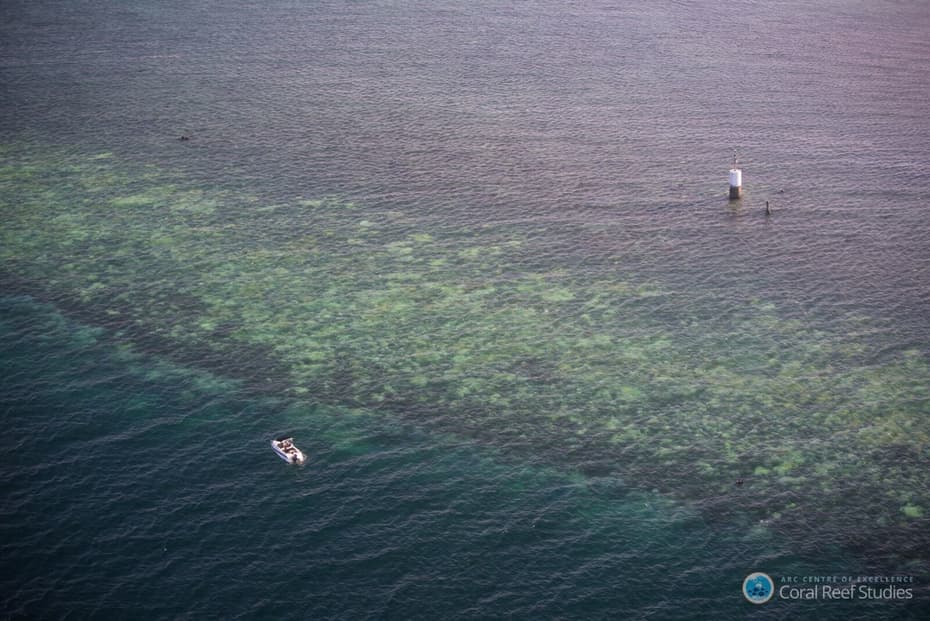An interview of leading coral expert Prof. Terry Hughes was recently published in a video. An areal survey reveals the first major damage of ENSO-induced warming on the northern Great Barrier Reef (GBR). Countless bleached reefs, hanging like white ghosts beneath the waves.

For those not familiar with the term, ‘mass coral bleaching events’ refers to a phenomenon where large portions of the world corals turn white due to heat stress. This often results in coral mortality. Now, this is not new to scientists. It has long been known that bleaching can occur in coral for a number of reasons. What is alarming is the scale and frequency of mass bleaching events resulting from ocean warming over the last 20 years; first in 1998, then in 2004. This year again, an avalanche is falling upon the world coral reefs, in the form of the third, yet most severe coral mass bleaching event in human memory. But something is different this year: coverage, anticipation and scale.
Yes, these major events until now had pervaded the attention of the general public; expect a couple of scientists and diving enthusiasts. Why? Because it was hidden underwater, I assume. But imagine if the world were to wake-up one day to find half the trees of the planet have lost their leaves and a third would die out in consequence, ensuing drastic consequences for all organisms which depend on forest habitat. I am sure this would make top news around the globe. Well, this is what happened to the world coral reefs in 1998, and let’s recall: it is unambiguously and directly driven by warming oceans.
As seen in the video, experts had already alarmed governments since that dredged year, but not much could or would be done until now. Today, communications are much more developed and information spreads ever faster through the internet and social networks, so this third mass bleaching event should not go under the public’s radar as previous and this video is a promising example of this coverage. A greater general awareness could certainly influence political will to do better in the future.

These events had taken experts by surprise, but have since then generated so much research, that the scientific community now has a fairly good idea of how these events are triggered, what extreme conditions lead to them. Although little but reverse the drivers of global warming can be done to avoid these catastrophes, at least they could be better anticipated, studied even more in depth, right on the spot.
In fact, NOAA models predicted unprecedented ENSO-induced ocean temperature anomalies for 2015-2016. Using this information and existing knowledge in coral biology, coral expert predicted that 2016 would be a bad, if not the worse, coral bleaching year. It turns out to be the fact indeed.
The faint silver lining is that this time, researchers were expecting it and standing-by at their battle stations. This event will probably be the best documented of all, and from the earliest stage. The knowledge gained here will be precious in finding which areas are more susceptible and which could be coral haven in a warmer future, thus bettering management and conservation capacity.
Sadly, this year’s event is predicted to be of an unprecedented scale. The current state of the northern GBR (95% bleaching) shows it may be up to our worse expectations. I suggest we brace ourselves, light a candle for the falling corals, hope the best of luck for the remaining ones and work hard towards healthy oceans and a sustainable future.
First damages of the 2016 global coral mass bleaching event
Share This
Previous Article
Pssst! Wanna breath underwater? Get your artificial gills
Next Article


